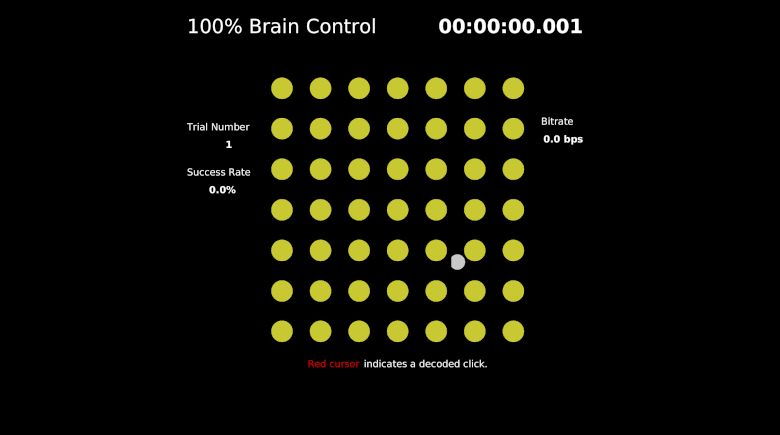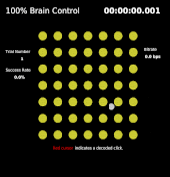
Communication neural prostheses aim to restore efficient communication to people with paralysis and ALS. These systems record neural signals from the brain and translate them, through a decoder algorithm, into control signals for moving an end effector. In our study, monkeys controlled computer cursors to acquire targets on a keyboard-like grid (Nuyujukian et al., IEEE TBME 2015). However, for communication neural prostheses to be effective, intuitive-to-use, and high-performance, they should be capable of selecting a desired target in a discrete fashion, analogous to how one might click with a computer mouse. To this end, we incorporated a hidden Markov model into a neural prosthesis to enable accurate and fast decoding of a “click” state. We demonstrated, in closed-loop experiments with nonhuman primates performing a keyboard-like task, that using an HMM to perform discrete state selection increases state-of-the-art performance by 13.9% and 4.2% in two monkeys. Further, we showed that by incorporating an HMM, the communication neural prosthesis could achieve peak communication rates of 4.7 to 6.5 bits per second. We also found that the HMM was controllable for the duration of entire experimental sessions with monkeys. These findings demonstrate that discrete decoding can be beneficially incorporated into neural prostheses to achieve new state-of-the-art levels of performance. These advances are important for further increasing the utility, usability, and clinical viability of intracortical neural prostheses. (Stanford University, Neural Prosthetic Systems Laboratory, http://web.stanford.edu/~shenoy/).

